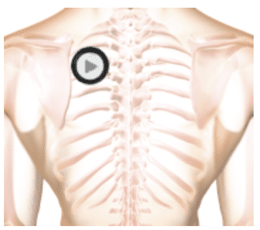Wheeze Lung Sounds
Introduction
Welcome to our website's wheezing page. On this page we provide a description of wheezing, including its clinical significance. We then compare common high-pitched wheezes to rhonchi (lower pitched wheezes) using audio recordings and text. Finally, we provide links to the wheeze lung sound training lessons available on this website.
Our wheezing lesson can be found in this course. Secondly, our reference index is designed to provide quick access to stridor sounds, with audio tracks, listening guides and waveforms. Use this link for quick reference to heart and lung sounds.
Wheeze
Wheeze is a sign of breathing problems. Wheeze sounds are most often apparent during exhaling a breath. They may also be sometimes heard when the patient inhales.
Listen
Listening Tips
Practice differentiating high-pitched wheeze from low-pitched wheeze using these audio recordings. Additional information and recordings are available in our lung sounds courses and reference guide.
Audio Playback


The patient was seated during auscultation.
Waveform
Compare To Rhonchi
Compare high-pitched wheezing to a low-pitched wheeze (rhonchi).


The patient was seated during auscultation.
Respiratory Sounds Reference Guide
Our auscultation reference guide provides quick access to this sound as well as many other adventitious sounds. Each sound is described also with an audio recording and waveform.A List of Wheeze Causes
Causes of a wheeze can include these:
- Asthma
- Allergic reaction
- Bronchial Abnormalities
- Inhaling a foreign object into the lungs
- COPD
- Gastroesophageal reflux disease
- Smoking
- Heart failure
- Medications
- Viral infection
Quick Links to Other Breath Sounds
While we have many breath sound lessons and quick references on this website. Please use the links below.
Bronchial Breath Sounds
Adventitious Breath Sounds
Adventitious Lung Sounds
Wheezing
Rhonchi
Fine and Coarse Crackles
Rales
Egophony
Auscultation Lung Sounds Audio
Related Lessons
| Basics of Lung Sounds
The goal of this basic course in lung sounds is to improve auscultation observational skills. We focus on describing important breath sounds and in providing recordings of each. Many students find that waveform tracings aid in learning lung sounds; we have included dynamic (moving cursor) waveforms with each lesson. The anatomy pages use illustrations to reveal an example of each lung sound (anatomy not yet available on smartphones). |
| 1 | Vesicular - Normal |
| 2 | Crackles - Fine (Rales) |
| 3 | Crackles - Coarse (Rales) |
| 4 | Wheeze |
| 5 | Rhonchi - Low Pitched Wheezes |
| 6 | Bronchial |
| 7 | Pleural Rubs |
| 8 | Bronchovesicular |
| Intermediate Lung Sounds
The goal of this intermediate course is to expand your observational skills when auscultating breath sounds. The course lessons include voiced sounds: bronchophony, egophony and whispered pectoriloquy. We also provide auscultation lessons on several types of wheezes, crackles and stridor. Each of these lung sound lessons includes audio, text and dynamic waveform. The anatomy pages use illustrations to reveal an example of each lung sound (anatomy not yet available on smartphones). |
| 1 | Vesicular - Diminished |
| 2 | Bronchophony - Healthy |
| 3 | Bronchophony - Abnormal |
| 4 | Egophony - e |
| 5 | Egophony - a |
| 6 | Whispered Pectoriloquy - Healthy |
| 7 | Whispered Pectoriloquy - Abnormal |
| 8 | Wheeze - Expiratory |
| 9 | Wheeze - Monophonic |
| 10 | Wheeze - Polyphonic |
| 11 | Crackles - Early Inspiratory (Rales) |
| 12 | Crackles - Late Inspiratory (Rales) |
| 13 | Stridor |
Authors and Reviewers
-
Heart sounds by Dr. Jonathan Keroes, MD and David Lieberman, Developer, Virtual Cardiac Patient.
- Lung sounds by Diane Wrigley, PA
- Respiratory cases: William French
-
David Lieberman, Audio Engineering
-
Heart sounds mentorship by >W. Proctor Harvey, MD
- Special thanks for the medical mentorship of Dr. Raymond Murphy
- Reviewed by Dr. Barbara Erickson, PhD, RN, CCRN.
-
Last Update: 11/10/2021
Sources
-
Heart and Lung Sounds Reference Library
Diane S. Wrigley
Publisher: PESI -
Impact Patient Care: Key Physical Assessment Strategies and the Underlying Pathophysiology
Diane S Wrigley & Rosale Lobo - Practical Clinical Skills: Lung Sounds
- PESI Faculty - Diane S Wrigley
-
Case Profiles in Respiratory Care 3rd Ed, 2019
William A.French
Published by Delmar Cengage -
Essential Lung Sounds
by William A. French
Published by Cengage Learning, 2011 -
Understanding Lung Sounds
Steven Lehrer, MD
-
Clinical Heart Disease
W Proctor Harvey, MD
Clinical Heart Disease
Laennec Publishing; 1st edition (January 1, 2009) -
Heart and Lung Sounds Reference Guide
PracticalClinicalSkills.com
?
main Pv# 1 , InitialPages , pix False , #Drops 0 ;
trys 0